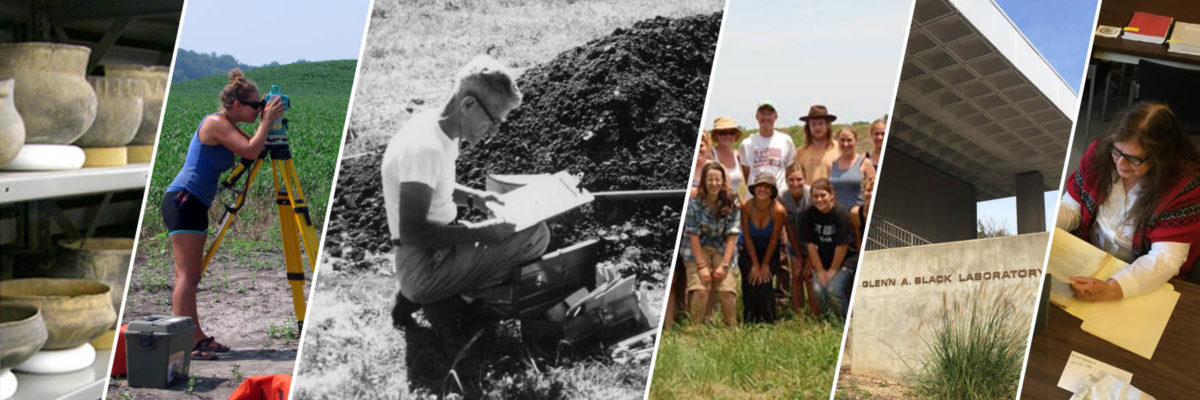by Amanda Pavot
Hi! This is Amanda Pavot!

…back to blogging after a summer hiatus, with a rehousing update! How was your summer? This project has been going steady this whole time!

In previous posts, I described the launch of the rehousing project as well as the actual rehousing process. I was one of the guinea pigs trying different rehousing strategies to help get an effective system down. After the summer semester started, many details changed, so I figure that I should make a record of what changed here for future reference.
We also managed to rehouse all the moldy boxes before August! Now we’re going back through the bone bulk collection in the “non-moldy” boxes of bone. With the high humidity and drastic weather changes typical to Indiana summers, some mold has been found on bones even in these boxes, but the amount of mold is much lower.
First big change! We no longer count every bone in every bag unless the database says that there should be 25 or less. We counted all the bones in the bags at first because there were large discrepancies between the number the database said we should have had vs. the number we actually found. But after we started rehousing more and more bags of 100, 200, or 300 bones that actually had 100, 200, or 300 bones we had to count out every time, we realized that it was both unnecessary and inefficient to have to count them. For absurdly large numbers it’s more efficient to keep track of them by weight rather than having to count them out every time anyway. The count is more important for smaller numbers, so we still need to count those.
We also no longer vacuum every moldy bone. We put more of an emphasis on treatment even if the mold seems minor; instead of just vacuuming the moldy bones off, we set them aside for conservation treatment. Bones with mold on them are bagged separately at first, and are put back with the rest of the bones they were originally with after treatment. When rehousing, the bags that need treatment are put in a box designated for bones going for conservation. Information about the treatment can be found in last week’s blog post by Dr. April Sievert.
Situations where we might vacuum the bones include basically any time the bones are very dirty. Sometimes there’s insect activity, and mud dauber nests have made a mess of the bag and bones. Sometimes there’s mouse activity, and mouse poop/nesting/etc. means you need to vacuum the bones to make sure anything undesirable isn’t transferred to the new bags. Sometimes it’s the presence of what we know as “the brown mold” (one of two new molds we’ve discovered on the bones this summer, but that’s for another blog post); it is easily transferable, so non-moldy bones may need to be vacuumed to ensure it’s really gone. And sometimes a lot of dirt just ended up in a bag for some reason. In any of these situations, one might decide to vacuum the bones to keep them and their future housing as clean as possible.
We also no longer write the weights or numbers on the bags themselves, only on the yellow artifact labels included in the bags. This is because the numbers might change after being combed through for human remains, so there’s no point in writing out the information on the bag with a permanent pen if it’s just going to be scratched out and changed later. Even after rehousing the non-moldy boxes that were already checked for human remains, the count and weight aren’t written on the bag in case of any other changes.
Throughout the summer, we had three teams of two people each working on rehousing four days a week, Monday through Thursday. Who those people were rotated a lot; some people left for vacations or research trips, others came back from vacations and research trips, and someone new even joined us. So even while people have been coming and going, we’ve had about six people working on the project the entire time. Friday was a non-rehousing day for catching up on other tasks that needed to be done for rehousing.
While other jobs related to the rehousing are done on Friday, they are also often done concurrently. For example, while we have a couple teams rehousing, one might be working on conservation. There will be more blog posts other people wrote about these jobs with more details about them. I’ve been doing a lot of subcataloging and box inventories, while others have been reintegrating mixed materials.
This has been another rehousing update from ground zero here at the GBL! We’re going to continue to post more updates, methods, interesting tidbits, research, and anything else we can think of! Stay tuned!
More About IMLS
The Institute of Museum and Library Services is the primary source of federal support for the nation’s libraries and museums. We advance, support, and empower America’s museums, libraries, and related organizations through grantmaking, research, and policy development. Our vision is a nation where museums and libraries work together to transform the lives of individuals and communities. To learn more, visit www.imls.gov and follow us on Facebook and Twitter.

(The views, findings, conclusions, or recommendations expressed in this blog post do not necessarily represent those of the Institute of Museum and Library Services.)

